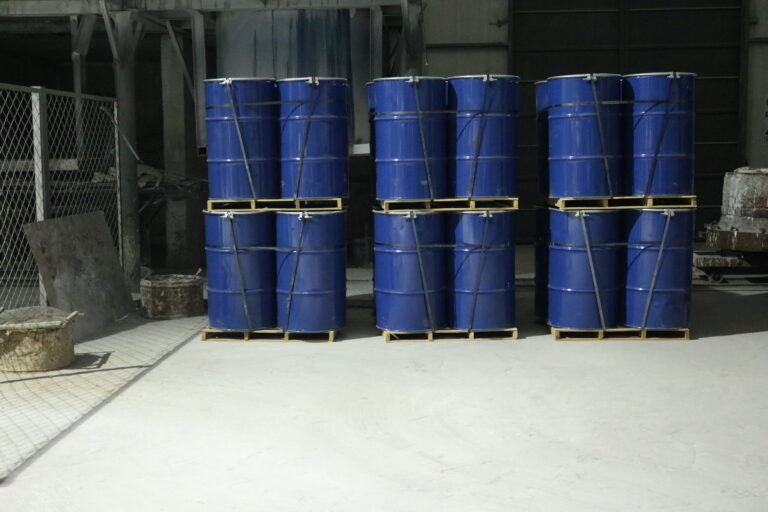When it comes to calcium metal(metallic calcium), we have to talk about its production.
Generally speaking, it has two production methods. Thermite method and electrolysis method respectively. Everything has their own merits. Likewise, these two methods are no exception. In terms of thermite method, its advantages include but not limited to: low energy barrier and consumption, low pollution, short process flow and high product quality. Additionally, compared with electrolysis method, some insiders think thermite method is worthy to develop.

Theoretical Basis for Producing Calcium Metal by Thermite Method
There are three reactions in below that reduction of aluminium and calcium oxide under some special conditions:
6CaO+2Al=3CaO·Al2O3+3Ca(1)
4CaO+2Al=CaO·Al2O3+3Ca(2)
33CaO+14Al=12CaO·7Al2O3+21Ca(3)
Frankly speaking, this reduction reaction is generated under some special conditions such as high temperature, high pressure and any other special conditions. Some people want to know which is used to control production. In fact, it mainly depends on many factors, they include but not limited to: stability of reaction product, diffusion speed, formation temperature and speed under the same condition, release of calcium vapour and so on.
Under vacuum condition, characteristics for reducing calcined limestone are as follows:
1. The reaction is carried out between solid-solid and solid-gas phase. Moreover, reaction speed is affected by diffusion rate between two phases directly;
2. This reaction is an endothermic reaction. I believe that you can remember this knowledge absolutely. Since it is endothermic, according to chemical knowledge we learned, enthalpy change is greater than zero. So, the heat transfer rate have a greater influence on the whole rate. What’s more, it is noted that only calcium vapour diffuses during this reduction reaction;
3. The reduction rate of inner layer is lower than outer layer, so we can consider that this reaction is carried out from surface to core. It restricted each other between diffusion speed of calcium vapour from inside to outside and heat transfer speed from outside to inside, thus, it is interfacial reaction.
Control of Production Conditions And Raw Material Quality
Some standard for raw materials and conditions should be met when producing calcium using by thermite method, these are as follows:
1. Chemical composition:
a. Limestone:
CaCO3 > 98%, Na2O+K2O < 0.01%, R2O3+SiO2 < 2.0%, combustion rate 43% – 45% commonly;
Crystalline structure and fine-grained rock ore;
b. Mineralizing agent:
Metallic fluoride and proportion is larger than 97%;
c. Al powder:
Including, Al content isn’t lower than 99%.
2. Process condition:
a. Calcining:
Temperature controlled between 1130 degree Celsius and 1200 degree Celsius approximately;
If it in rotary kiln, its block size usually is 15 – 35mm, in vertical, it is 100 – 250mm generally;
b. Charge Fineness:
For lime, it is -0.074mm; for Al powder, it is smaller than lime, namely -0.82mm; as for mineralizer, it is same as lime;
c. Reduction:
Reduction temperature is 1160 – 1250 degree Celsius, reduction time is 12 – 14h commonly and vacuum degree is about 4 – 7 pascal.
3. Reasonable ingredients
Many countries have introduced some policies about environmental protection in recent years. In order to respond to the national call as far as possible, we must do something, such as save energy, reduce the raw material consumption, improve the reduction efficiency and any other things what we can do.
According to the three reaction formulas we mentioned above, you can calculate the theoretical amount of Al, actual amount of Al added and the amount of mineralizer added respectively.
For reaction 1, theoretical amount is about 16.07kg, actual amount is 16.07*M kg. Including, M(aluminium ratio) is adjusted depending on fluctuations of Ca and Al market price. Furthermore, theoretical amount is 24.02kg and 20.46kg respectively for reaction 2 and 3.
Generally speaking, the best batching ratio can get the higher reduction efficiency under the best reduction condition. According to formula, you can calculate the best batching ratio of producing metallic calcium by thermite method. It is the greatest and most economic ratio, because you calculate according to chemical composition of the charge and the most reasonable aluminium ratio.
Conclusion
With the development of science and technology, thermite method to produce metallic calcium has become an emerging industry gradually. Almost in all aspects of thermite method are greater than electrolysis method, whatever in environmental protection, costs, labor conditions and so on. At the same time, it can achieve greater economic benefits. While, nothing is perfect in the world, it is no exception. It also causes some problems, such as pollute the environment and waste energy seriously, although it is greater than electrolysis method. Country has introduced policies about reducing energy consumption and emissions, thus, insiders must try their best to solve these problems, thereby consummate this process.
As we mentioned above, it is imperative for insiders to change the backward situation of aluminothermic calcium smelting industry, in order to follow the general trend and develop calcium industry. They can attain the goal that save energy by improving equipment level and technique condition. Peculiarly, regenerative combustion technology is applied to reduction furnace.






